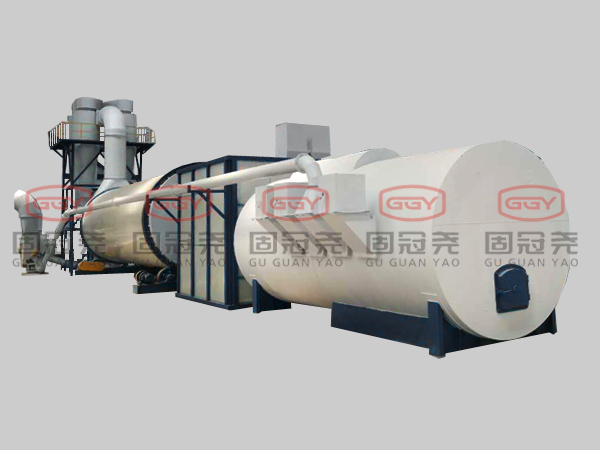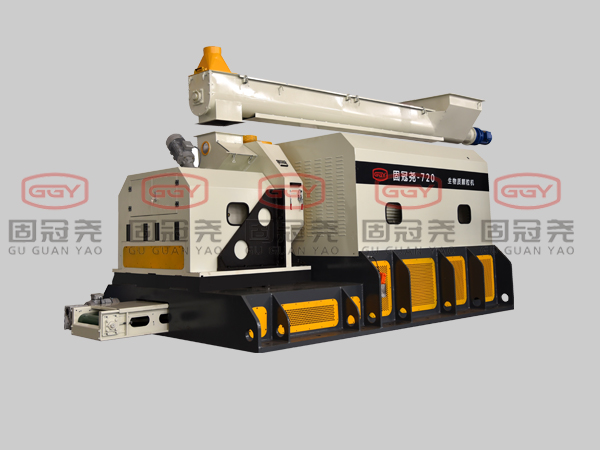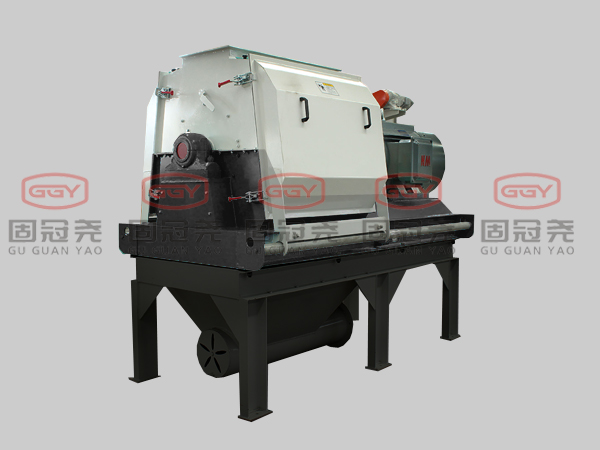Biomass thermoelectric and heating is a better choice to replace coal burning
Source: en.ggyjx.com Time:2022-08-23 Reading:171
With the "coal to electricity, coal to gas" facing the dilemma of can not afford to change, can not afford to use, can not afford to fill, biomass thermoelectricity and heating should be given priority development.
Winter heating scattered coal combustion is a major culprit, fog weather as "cut, clean coal heating" work launched a full-scale and in-depth, especially "coal gas electricity, change is" the face of the investment and operation cost in "combination" and air supply shortage, gas pipe network, power network expansion, "coal gas electricity, change is facing a dilemma.
In this context, local materials and biomass heating are the best alternative to decentralized coal burning by the Ministry of Agriculture and Rural Affairs.
Previously, the energy Bureau formally issued "on the development of" 100 cities and towns "biomass cogeneration county clean heating demonstration project construction notice" to promote biomass cogeneration. The recently issued "Notice of the Energy Administration on Doing a good job of clean heating in the 2018-2019 heating season" proposed to actively expand the scale of renewable energy heating, according to the conditions of biomass resources in various places, support the development of biomass cogeneration or biomass boiler heating, and distributed biomass molding fuel heating.
"Coal to biomass cogeneration" or biomass heating has many advantages, biomass direct combustion, gasification cogeneration projects can solve the central heating of one million square meters of county, small and medium-sized towns. Especially in the county seat and town area, the waste of agroforestry biomass can be realized to "change into treasure and use in place". While promoting distributed clean heating production and consumption, it provides a practical development path for our county to "cut down coal and clean heating".
Resource gestation potential
Taking Hebei Province as a representative, it can become the first key region to carry out large-scale biomass power generation demonstration projects in China, because of its rich regional agricultural and forestry biomass resources: Xingtai area, known as the "cotton sea in central Hebei", is a region of concentrated cotton cultivation, rich in cotton straw resources; Pingquan County in Chengde, Hebei Province is a larger edible fungus production base in North China. Every year, a large number of edible fungus cultivation leftovers "fungus bags" can be used as fuel for biomass thermal power plants to be environmentally friendly treatment. Wen 'an County is "the hometown of China's plate", every year a large number of plate leftovers, can "turn waste into treasure" as raw materials for biomass thermoelectric conversion.
The Beijing-Tianjin-Hebei region will be one of the more potential areas for biomass heating. Hebei Province, Shandong Province, Tianjin, Henan Province, Inner Mongolia and Dongthree provinces are all advantageous development areas for biomass cogeneration and pure biomass heating. Among them, Yangxin County in Binzhou, Shandong Province has completed a multi-level and multi-mode pilot demonstration of "large-scale raw material acquisition, storage, transportation and processing", "large-scale biomass cogeneration", "distributed biomass central heating", "household dispersed biomass heating and cooking". At present, biomass heating in Hebei and Shandong has developed rapidly. In the next two years, biomass heating projects in Inner Mongolia, Eastern China and the surrounding areas rich in biomass resources will be developed later.
From the economic point of view, biomass heating has better flexibility, stability and controllability than coal and natural gas, and heating cost is higher than coal but lower than natural gas. According to different biomass heating technology routes, the heating cost between coal and natural gas, although slightly higher than coal heating, but far lower than natural gas.
However, although "coal reform" is more economic and feasible, biomass heating is not put into the scope of "cut down coal and clean heating", which is one of the bigger obstacles in the industrial development.
The promotion of "replacing coal with electricity and gas" is supported by relevant policies and strongly promoted by environmental protection and development and reform departments, while "replacing coal with electricity and gas" is in an awkward situation of "sidelining".
With the "coal to electricity, to gas" facing can not afford to change, can not afford to use, can not afford to fill the dilemma, biomass thermoelectricity and biomass heating should be given more priority to develop. Because biomass heating power generation on the one hand belongs to renewable energy, on the other hand is "turning waste into treasure, harm into benefit". In agricultural and rural areas, if biomass waste is not environmentally friendly, it will bring harm such as incineration pollution and rotting greenhouse gas emissions. "Renewable" should be given priority, and "those who turn harm into benefit" should be given greater support.
Inhibited development
In the development process of biomass thermoelectric project, the government support is insufficient or the due support is seriously delinquent.
In view of the process that biomass heating and power generation can produce clean heat and electricity at the same time, "turning waste into wealth and harm into benefit", the preferential fixed on-grid price (0.75 yuan/KWH) is given to biomass thermal power plant, which is higher than coal electricity price. As rural labor costs rise year by year and environmental protection requirements increase, the price of electricity has barely maintained the healthy development of the project.
At present, biomass thermal power projects are faced with project subsidy electricity price included in the support links, difficulties, long cycle, pay serious arrears and other artificial difficulties. In this regard, it is suggested to cancel the bio-thermal power project "listed in the subsidy catalogue system", implement the "priority development, fixed electricity price, full production full revenue, timely payment", put an end to the artificial barriers set for the development of renewable energy and the healthy development of rural environmental protection undertakings.
Regarding the ideas and industrial policies for the development of biomass heating and biomass cogeneration, there is a voice that all biomass power projects should be changed to "cogeneration", otherwise they will not be supported. This is a "one-size-fits-all" short-sighted approach that is extremely detrimental to industrial development.
In fact, the biomass power generation demonstration project approved 14 years ago in our country has clear heating requirements. But our actual industry development is very immature. In this case, we propose to actively develop biomass cogeneration where conditions are available, encourage pure power generation projects without cogeneration conditions, and reserve heat supply at the same time.
In the following years, the practice found that it would soon lead to the development of regional industrial parks and civil heating. Therefore, biomass power generation reserved heat supply is a forward-looking layout for the development of clean energy in a county, and it has the value of vigorously promoting and broad development space.
Another problem faced by biomass thermoelectric is the lack of financial support policies for biomass thermoelectric. In addition to a few central soes investing in such projects without lack of financial support, most local enterprises and private enterprises face the common problem of "financing difficulties". The central government requires supporting the development of small and medium-sized enterprises, but there is still a big gap in specific support measures and implementation.
To solve the problems of biomass thermoelectricity and heat supply, we need to start from the following aspects:
First of all, we should ensure that biomass thermoelectricity and pure biomass heating are included in the local clean heating planning, and should at least enjoy no less than the support policy of "coal to gas to electricity". "If electricity is appropriate, coal is appropriate, gas is appropriate, oil is appropriate," while also "living is appropriate," and in the county areas of agricultural and rural areas, biomass energy should be given the first place to support development.
Second, implement support policies to avoid default or not in place;
In addition, biomass energy has the unique characteristics of multiple routes, multiple subjects and multiple meanings. It is necessary to have a forward-looking, developmental vision and mind to develop biomass energy, and adopt a correct, suitable and feasible industrial development path according to the objective requirements of national economic and social development.
At the same time, we should do a good job in financial and capital support, and actively implement the central government's encouraging policies on the development of agriculture-related and small and medium-sized enterprises. It is suggested that we should clarify the proportion of state and private financial support and make up for the historical debt of "renewable energy finance, green finance and agriculture-related finance".
Related news
- Why promote biomass pellet fuel molding? 2022-08-23
- Biomass thermoelectric and heating is a better choice to replace coal burning 2022-08-23
- Guguanyao participated in the exhibition 2020-08-20
- Eight advantages of biomass pellet fuel in daily life 2020-08-10
- What competitive advantages does guguanyao pulverizer have 2020-08-10





